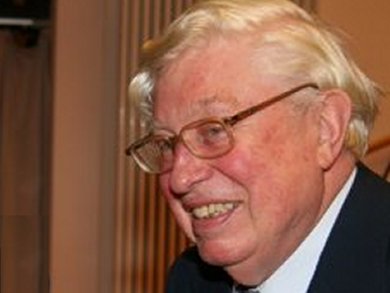Gerhardt Ertl celebrates his 75th birthday on October 10th. Ertl was the winner of the Nobel Prize in Chemistry in 2007 for his work on chemical processes on solid surfaces. He was one of the first scientists to concentrate on the new field of semiconductors, and developed the methodology for modern surface chemistry, which uses high-vacuum experiments to observe the behavior of atoms and molecules on the uncontaminated surface of a metal.
Ertl was born in Stuttgart, Germany. He studied physics at the Technical University of Stuttgart and completed his Diplome in Physics in 1961. He received his Ph.D. from the Technical University of Munich, Germany, in 1965. Ertl worked as a professor of physical chemistry at the universities of Hannover, Germany, (1968–73) and Ludwig Maximilians University, Munich, (1973–1986). During this time he also held visiting professorships in America at California Institute of Technology, the University of Wisconsin and the University of California, Berkeley. In 1986, he became director at the Fritz Haber Institute of the Max Planck Society, Berlin, Germany, where he remained until his retirement in 2004.
- Reactions at Surfaces: From Atoms to Complexity (Nobel Lecture)
Gerhard Ertl,
Angew. Chem. Int. Ed. 2009, 47(19), 3524–3535.
DOI: 10.1002/anie.200800480 - Elementary Processes at Gas/Metal Interfaces

Gerhard Ertl,
Angew. Chem. Int. Ed. 1990, 15(17), 391–400.
DOI: 10.1002/anie.197603911 - Formation of Light-Emitting Ag2 and Ag3 Species in the Course of Condensation of Ag Atoms with Ar
W. Schulze, I. Rabin, G. Ertl,
ChemPhysChem 2004, 5(3), 403–407.
DOI: 10.1002/cphc.200300939



